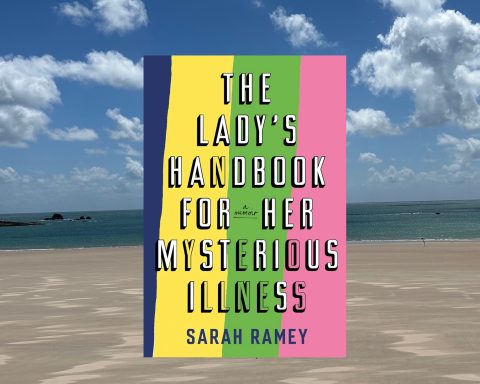Dr Matthew Davis is a retired General Practitioner at the NHS Leicestershire County and Rutland
Ana Worthington is Postgraduate Student at the University of Oxford
The Assisted Dying Bill, a Private Members’ Bill introduced to the House of Lords by Baroness Meacher, received its second reading on 22nd October, 2021. Such legislation will have profound consequences on medical practice and thus it is important to scrutinise some of the arguments proposed in favour of the Bill based on available evidence and clinical experience.
Such legislation will have profound consequences on medical practice…
In her opening speech, Baroness Meacher asserted that recent changes in doctor opinion have been “extraordinary”. She then referred to the British Medical Association (BMA) and the Royal College of Physicians (RCP) which she claimed “have ended their opposition to assisted dying”. These assertions distort the stance of professional medical organisations in the UK; none actively support “assisted dying” in any form. In 2020, the RCP clarified that the organisation “does not support a change in the law to permit assisted dying”.1 The motion that the recent BMA Annual Representative Meeting passed, by 149 to 145 votes, was “in order to represent the diversity of opinion demonstrated in the survey of its membership”.2 Given that the BMA was “neutral” as recently as 2006, this is not an “extraordinary” change. According to the 2020 BMA survey, few doctors (34%) would be prepared to be actively involved in any such process.3
Baroness Meacher also stated in her opening remarks that the, “..sole aim of the Bill is to reduce unnecessary and unbearable suffering,” as “…there are forms of suffering that even the best palliative care cannot alleviate..” such as intractable “…nausea and vomiting [due to] an allergy to antiemetics” and “…fungating wounds”. As palliative care has advanced, however, untreatable physical suffering has greatly diminished. The management of nausea is a core component of basic palliative care and it is exceedingly rare for a patient to be intolerant, let alone allergic, to every antiemetic. Fungating wounds are rare and, again, their management has changed radically in recent years through specialist dressings, antibiotics, pain control, psychological support and appropriate privacy. If the sole aim of the Bill is to reduce suffering, we would expect palliative care consultants, who deal with the most severe of patient symptoms at the end of life, would be overwhelmingly in favour of “assisted dying”. Yet, only 7% voted in favour of legalisation in the most recent BMA poll.3
Baroness Meacher claimed that this is a “…modest Bill based on tried and tested laws from overseas”. In truth, the results of testing assisted dying laws overseas are deeply concerning. In the Netherlands, there are large-scale unexplained geographical variations in the incidence of euthanasia which researchers conclude may represent overuse or misuse of euthanasia.4 In Belgium, it is estimated only 50% of euthanasia cases are actually reported to the Federal Euthanasia Control and Evaluation Committee.5 In Canada, there are calls to extend the right to die to the mentally unwell, patients who are unable to consent, and children6 and physicians report that “MAiD” complicates patient care, threatens the doctor-patient relationship, and makes patients fearful to enrol in hospice services.7 The eligibility criterion within the Assisted Dying Bill supposedly protects vulnerable patients from abuse or coercion. One requirement is that patients must be within six months of the end of life. Studies show, however, that prognostication in terminal illness is extremely inaccurate and it is impossible to verify that patients are in fact in the last months of life.8 The bill’s definition of terminal illness is also problematic. According to Oregon’s Death With Dignity Act,9 which Meacher’s Bill is based on, anyone with a chronic illness who is likely to die within six months if they choose to stop treatment is eligible for assisted dying. This means eligible patients could include insulin-dependent diabetics, who have an illness which is inevitably progressive and whose treatment will never reverse the condition.
But how can any doctor know what happens behind closed doors…
During the debate, Baroness Mallalieu stated that she believes “…two separate doctors and experienced High Court judges” will be able to detect “pressure, either internal or external” on vulnerable patients. But how can any doctor know what happens behind closed doors—whether that is perceived burdensomeness, persuasion, abuse, neglect or coercion? It is also unlikely that the second medical opinion will be truly “independent.” In busy clinical settings where challenging another’s opinion is difficult and often personally costly, we think the second medical opinion will, in time, become a rubber-stamping exercise. In Oregon, patients can approach numerous doctors until they find one willing to prescribe assisted suicide drugs and in 2020 one doctor wrote as many as 31 lethal prescriptions.10
While it is clear that proponents of the Bill seek to improve end of life care options, the above arguments made in support of such legislation do not stand up to scrutiny in light of international evidence and clinical expertise.
References
1. Royal College of Physicians. The RCP clarifies its position on assisted dying. Royal College of Physicians 2020. https://www.rcplondon.ac.uk/news/rcp-clarifies-its-position-assisted-dying
2. Chisholm, J. BMA adopts neutral position on physician-assisted dying. BMA News and Opinion 2021. https://www.bma.org.uk/news-and-opinion/bma-adopts-neutral-position-on-physician-assisted-dying
3. Chisholm, J. BMA physician-assisted dying survey results published. BMA News and Opinion 2020. https://www.bma.org.uk/news-and-opinion/bma-physician-assisted-dying-survey-results-published
4. Groenwoud AS, Femke A, Arvin M, et al. A. Euthanasia in the Netherlands: a claims data cross-sectional study of geographical variation. BMJ Supportive & Palliative Care 2021. doi: 10.1136/bmjspcare-2020-002573
5. Smets T, Bilsen J, Cohen J, et al. Reporting of euthanasia in medical practices in Flanders, Belgium: cross sectional analysis of reported and unreported cases. BMJ 2010; 341:c5174 https://doi.org/10.1136/bmj.c5174
6. Steger M. Update on medical assistance in dying in Canada. British Columbia Law Institute 2021. https://www.bcli.org/update-on-medical-assistance-in-dying-in-canada/
7. Mathews JJ, Hausner D, Avery J, et al. Impact of Medical Assistance in Dying on palliative care: A qualitative study. Palliative Medicine 2021; 35(2): 447-454. doi:10.1177/0269216320968517
9. Stahle F. Oregon healthy authority reveals hidden problems with the Oregon assisted suicide model. Euthanasia Prevention Coalition 2018.
10. Oregon Death with Dignity Act 2020 Data Summary. Oregon Health Authority Public Health Division, Center for Health Statistics 2021. https://www.oregon.gov/oha/PH/PROVIDERPARTNERRESOURCES/EVALUATIONRESEARCH/DEATHWITHDIGNITYACT/Documents/year23.pdf
Featured image by Shreyas Sane on Unsplash









Andrew Papanikitas* is deputy editor of the BJGP. He is on twitter @gentlemedic
Peter Toon is a retired GP writer and virtue ethicist
Paquita De Zulueta, is Hon. senior lecturer in medical ethics and law at Imperial College and recently retired GP. She is on twitter @PdeZ_doc
David Misselbrook is senior ethics advisor for the BJGP
John Spicer* is a South London GP, ethicist and medical educator. He is on twitter @johnspicer3
This week’s BJGP Life articles (see bottom of article for what is coming up) will have an ethical or philosophical flavour, as BJGP Life launches a new column: Ethics of the ordinary (EotO) is a regular column that explores ‘ethical and moral concerns relevant to general practice and primary care.’
There are many reasons why primary care generates ethical and philosophical issues. Patients are likely to be meaningfully autonomous -fully clothed and fully conscious, more empowered to contest medical ideas of best interests and risk.1 Primary care teams look after entire families, and generally do not discharge patients who choose not to comply with their recommendations. They can be left to look after patients deemed ‘untreatable’ by secondary care services.2 They often have a holistic understanding of patients’ backgrounds, life stories and values acquired from longer term relationships built on trust and familiarity. And there is just so much general practice happening out there that involves moral complexity. A patient attends during a full surgery, distraught over a marital breakdown – how much time should you give them? Can this teenager be in a consensual relationship with their few-years-older partner? Should we be motivated by compassion or duty? Should we delay the initial COVID-19 vaccination programme because of possible risks? The issues are as endless and everyday as general practice itself. And it is a poorly kept secret that ethics teaching in undergraduate and postgraduate medical education is often delivered by general practitioners.3
Some cases involve much discussed ‘ethical dilemmas,” such as those concerning abortion or end of life care, or arise from societal or technological changes such as assisted fertility or advances in genomic medicine. But many raise everyday and ordinary issues which are ‘unsexy‘4 from a popular or academic perspective because they are not associated with a new technology, a change in the law or a moral panic. Dramatic and technology-driven ethical issues also clearly affect community and primary care settings. Issues and conflict may also arise in the interface between teams, whether they are located in hospitals or community settings.5
The ethics of the ordinary is a reference to the of issues and decisions found in everyday practice.6,7,8 It may be that the public interest, or academic funding, or political gaze, have moved on. It may be that that undramatic instances still raise moral questions worth answering. EotO relates to all healthcare settings (not just general practice and not just those which are patient-facing).
EOTO has also been embodied as a mundane revolution in UK primary care, by groups of British GPs and allied academics in a variety of disciplines. Admiring the relative success of clinical ethics committees in hospitals and national groups9 like the Genethics Forum and the UK Clinical Ethics Network, some set up discussion groups,10 others contacted their local hospital ethics committee with their dilemmas.11 We called for a body of knowledge and community of scholars to support primary healthcare12,13 and ran a series of conferences at the Royal Society of Medicine over a decade, with support from the Institute of Medical Ethics, The University of Oxford and the RCGP.14,15 A large group of us wrote an award-winning handbook of primary care ethics,16 cited in the RCGP curriculum. The BJGP ran an A-Z of medical philosophy – explicitly inviting readers to use the ideas in reflecting on their own professional lives.17 During this period the RCGP committee on medical ethics has been a presence at the RCGP annual conference, running sessions on (inter alia): shared decision-making, part-time working, sponsorship, guidelines and conflicts of interests as well as tackling artificial intelligence and genomic medicine in primary care.18
The references below represent the range and evolution of issues raised, and a collegial community which is far from homogenous in world view and intellectual tradition. You will see familiar authors from past and present, and we invite the wider BJGP and BJGP life community to join us in this discourse. We will include both solicited and reasonably argued unsolicited work in the EotO column. EotO will not shy away from controversial or divisive topics, and collegial discussion in the comments is encouraged. Please ensure that debate is respectful, and founded on reasonable arguments and facts.
What to expect the week commencing 14th February 2022 on BJGP Life:
On Wednesday, Felicitas Selter, Kirsten Persson, and Gerald Neitzke discuss the similarities and differences in animal and human euthanasia as a source of moral distress for the practitioner.
On Thursday, Helen Burn explains that because legalised physician-assisted dying would likely involve GPs, GPs should think about their views on the issue.
On Friday, Matthew Davis and Ana Worthington argue that the arguments in favour of the recent Assisted Dying Bill at its second reading in the UK House of Lords are based on flawed evidence.
On Saturday, Koki Kato introduces us to phenomenology as an approach to understanding patient-centred care, using his own illness-experience as a worked example.
On Sunday Samar Razaq reflects on truth, medical opinion and the scholarship in the age of Twitter.
All this week’s BJGP Life articles have been recently independently submitted (none were commissioned). We hope that they generate discussion and collegial debate.
References
1. Brody H. The essence of primary care, p. 56-61 in The Healer’s Power. New Haven: Yale University Press. 1992
2. Pellegrino E. The healing relationship: the architronics of clinical medicine, in Shelp EA, ed. The clinical encounters: the moral fabric of the patient-physician relationship. Reidel, Dordrecht 1983
3. Misselbrook D (2012) The BJGP is open for ethics. Br J Gen Pract, DOI: https://doi.org/10.3399/bjgp12X629964
4. Butcher F (2011), The appeal of ‘unsexy’ ethics, https://wellcome755.rssing.com/chan-8434298/latest-article2.php (accessed 12/2/22)
5. Wiles K et al, Ethics in the interface between multidisciplinary teams: a narrative in stages for inter-professional education, London J Prim Care (Abingdon). 2016; 8(6): 100–104. doi: 10.1080/17571472.2016.1244892
6. Papanikitas A and Toon P, Last but not least: the ethics of the ordinary, Br J Gen Pract, 2010; 60 (580): 863-864. https://bjgp.org/content/60/580/863.full
7. Cyril et al, Ethics of the ordinary: a class response, Br J Gen Pract, 2012; 62 (595): e143-e146. DOI: https://doi.org/10.3399/bjgp12X625283
8. Gardner J et al, Emerging themes in the everyday ethics of primary care, Clinical Ethics 2011; 6 (4):211-214 doi: https://doi.org/10.1258/ce.2011.011034
9. Peile E. Supporting primary care with ethics advice and education, BMJ, 2001; 323(7303): 3–4. doi: 10.1136/bmj.323.7303.3
10. Evans Patel G, King A, and Spicer J, Healthcare ethics: learning in the workplace, Work Based Learning in Primary Care 2006; 4: 57–64 https://www.researchgate.net/publication/321318915_Healthcare_ethics_Learning_in_the_workplace accessed 12/2/22
11. Sokol D (2009), Who wants to be the flu GP? http://news.bbc.co.uk/1/hi/health/8135658.stm (accessed 12/2/22)
12. Papanikitas A, Toon P. Primary care ethics: a body of literature and a community of scholars? Journal of the Royal Society of Medicine. 2011;104(3):94-96. doi: https://doi.org/10.1258/jrsm.2010.100353
13. De Zulueta P. (2008) Welcome to the ethics section of the London Journal of Primary Care London Journal of Primary Care, doi: https://doi.org/10.1080/17571472.2008.11493183
14. Papanikitas A, et al. (2011) Ethics of the ordinary: a meeting run by the Royal Society of Medicine with the Royal College of General Practitioners. London Journal of Primary Care, doi: https://doi.org/10.1080/17571472.2011.11493331
15. Papanikitas A et al, 4th annual primary care ethics conference: ethics education and lifelong learning London J Prim Care (Abingdon). 2014; 6(6): 164–168. doi: https://doi.org/10.1080/17571472.2014.11494369
16. Jewell D, Brave new ethics, Br J Gen Pract 2019; 69 (681): 200. doi: https://doi.org/10.3399/bjgp19X702053
17. Misselbrook D (2013) An A-Z of medical philosophy. Br J Gen Pract, doi: https://doi.org/10.3399/bjgp13X660841
18. Papanikitas A. (2016) Education and debate: a manifesto for ethics and values at annual healthcare conferences. London Journal of Primary Care 8:6, pages 96-99. https://doi.org/10.1080/17571472.2016.1244152
Featured image: From the classroom to the clinic, by Andrew Papanikitas